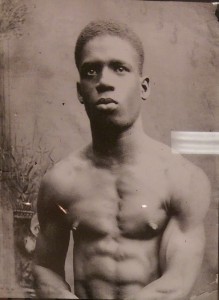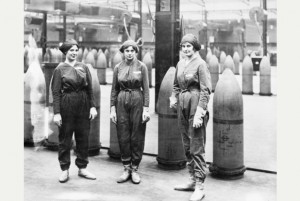
Some of you may recall our blogpost on the Chilwell munitions factory explosion. The disaster, which occurred 97 years ago this week, destroyed much of the No. 6 Filling Factory, which had been used for adding the volatile chemicals to shells prior to shipment to the frontline. 134 people were killed and a further 250 injured and the blast could be felt as far away as West Bridgford.
If you’re interested in finding out more about the disaster, and hearing some of the recorded testimonies of people who remember it, you may be interested in a series of events organised by Excavate Community Theatre.
This weekend (4th and 5th July), an exhibition will be held in Beeston Town Square, with photographs and audio interviews from relatives of those who worked at the factory. A new play about the disaster will also be performed at 11am, 1pm and 3pm on the Saturday and 12pm and 2pm on the Sunday.
On Sunday, from 10am to 2pm, Chetwynd Barracks, which lies on the site of the factory, will be open to allow people to visit the memorial on the site and to see a small exhibition.Pedestrian entry will be from Chetwynd Road; vehicular entry from Swiney Way where photographic ID will be needed.
A series of related events will also be held at the White Lion pub in Beeston. On Saturday night, an evening of First World War storytelling will begin at 7.30pm (tickets £6 on the door, or £5 advance from the pub). On Sunday, the pub will hold a screening of the BBC film The Killing Factories, with an introduction from the director Tony Roe. This will start at 7pm and will be free of charge.
The project has been funded by the Heritage Lottery Fund and Broxtowe Borough Council.
 For more information, please visit excavate.org.uk
For more information, please visit excavate.org.uk
 Researching World War I is rather a difficult task involving the trawling through archival material and old newspapers. In my work with the Centre of Hidden Histories, I want to uncover the family histories of soldiers involved in the War effort, specifically the participation of the Malay State Guides in the Aden Field Forces from 1915 to 1919. The Hidden Histories project aims to fill a gap in memories and as the focus on Malaysian Sikh participation in World War I emphasizes the Ghadr movement and the resulting Singapore Mutiny prior to the troop transfers in 1915, there is comparatively little on their experiences during the war. The work to date has been a challenge, in identifying families and trying to source primary material. In the Malaysian Archives, the files are restricted and require government permission while the Japanese Occupation of World War II in Malaysia meant the destruction and loss of significant chunks of material history including the regimental colours and silver.
Researching World War I is rather a difficult task involving the trawling through archival material and old newspapers. In my work with the Centre of Hidden Histories, I want to uncover the family histories of soldiers involved in the War effort, specifically the participation of the Malay State Guides in the Aden Field Forces from 1915 to 1919. The Hidden Histories project aims to fill a gap in memories and as the focus on Malaysian Sikh participation in World War I emphasizes the Ghadr movement and the resulting Singapore Mutiny prior to the troop transfers in 1915, there is comparatively little on their experiences during the war. The work to date has been a challenge, in identifying families and trying to source primary material. In the Malaysian Archives, the files are restricted and require government permission while the Japanese Occupation of World War II in Malaysia meant the destruction and loss of significant chunks of material history including the regimental colours and silver.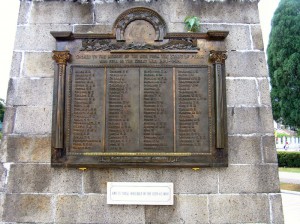 During the course of my research, I spoke with one woman, who has devoted time and effort to research on her father and his participation in the Malay State Guides, his service in Aden and later his work within the Police forces. Her father was one of the approximately five hundred soldiers who returned from Aden.
During the course of my research, I spoke with one woman, who has devoted time and effort to research on her father and his participation in the Malay State Guides, his service in Aden and later his work within the Police forces. Her father was one of the approximately five hundred soldiers who returned from Aden.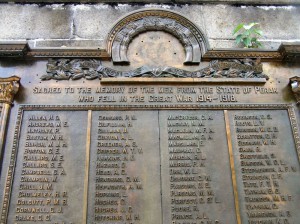
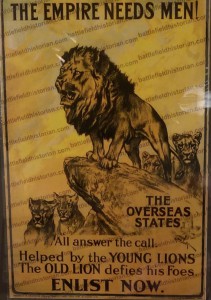 This week I visited the 400 Years of Caribbean Contribution to British Heritage and Culture exhibition at Solihull Central Library. It is a fine collection of images and information about the role played by people from the Caribbean and people of Caribbean heritage, in some of the landmark events in British history.
This week I visited the 400 Years of Caribbean Contribution to British Heritage and Culture exhibition at Solihull Central Library. It is a fine collection of images and information about the role played by people from the Caribbean and people of Caribbean heritage, in some of the landmark events in British history.
 Naturally, large sections are dedicated to the Second World War and of course, the First, which is what prompted my interest. Much of it is biographical, with pictures, newspaper clippings and poetry dedicated to well known figures such as Walter Tull, and some (undeservedly) less celebrated ones.
Naturally, large sections are dedicated to the Second World War and of course, the First, which is what prompted my interest. Much of it is biographical, with pictures, newspaper clippings and poetry dedicated to well known figures such as Walter Tull, and some (undeservedly) less celebrated ones.